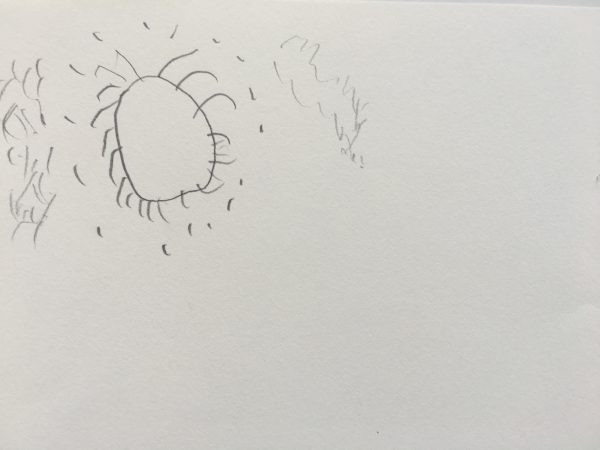After filming On Drawing, with Mina Pegourie, one of the questions that I was left with was, »what happens to the mind whilst the hand draws?« The hand clearly communicates with the brain whilst drawing, but what is the nature of that communication? What sort of knowledge is produced in these terms? And what is the impact of drawing as a physical gesture on the brain?
A house with stair and tree, as drawn by Mina Pegourie.
Though not a draughtswoman myself, I’ve always enjoyed drawing, and used to embark on drawing-walking-wandering sessions with friends outdoors, especially when I was studying animation film in France. To me, drawing always had a positive effect on my brain. Like walking, it seemed to stimulate lateral thinking.
Thus, after developing the work with Mina Pegourie, I started to study neuroscience, and discovered that indeed drawing is an activity that impacts the brain.
According to neuroscience, the mind is not the sole producer of knowledge: the body also experiences emotions, which are communicated to the mind through the nervous system.
Contrary to what Descartes established in his postulate »I think, therefore I am«, emotions play an important role in the formation of knowledge, through the activity of the body. As the neuroscientist Antonio Damasio points out in his book Descartes’ Error: Emotion, Reason, and the Human Brain, »the Cartesian idea of a disembodied mind may well have been the source, by the middle of the twentieth century, for the metaphor of mind as a software program.«
Therefore, when Mina Pegourie draws, her hand is connected with the brain, and produces emotions that will be assimilated through the nervous system, thus contributing to the process of generating knowledge. Besides, drawing also has an impact on the memory, because whilst drawing Mina recalls past memories of the friends/events that she is representing visually. But, that shall be analyzed in detail in a future post…
The sun imagined by Mina Pegourie
